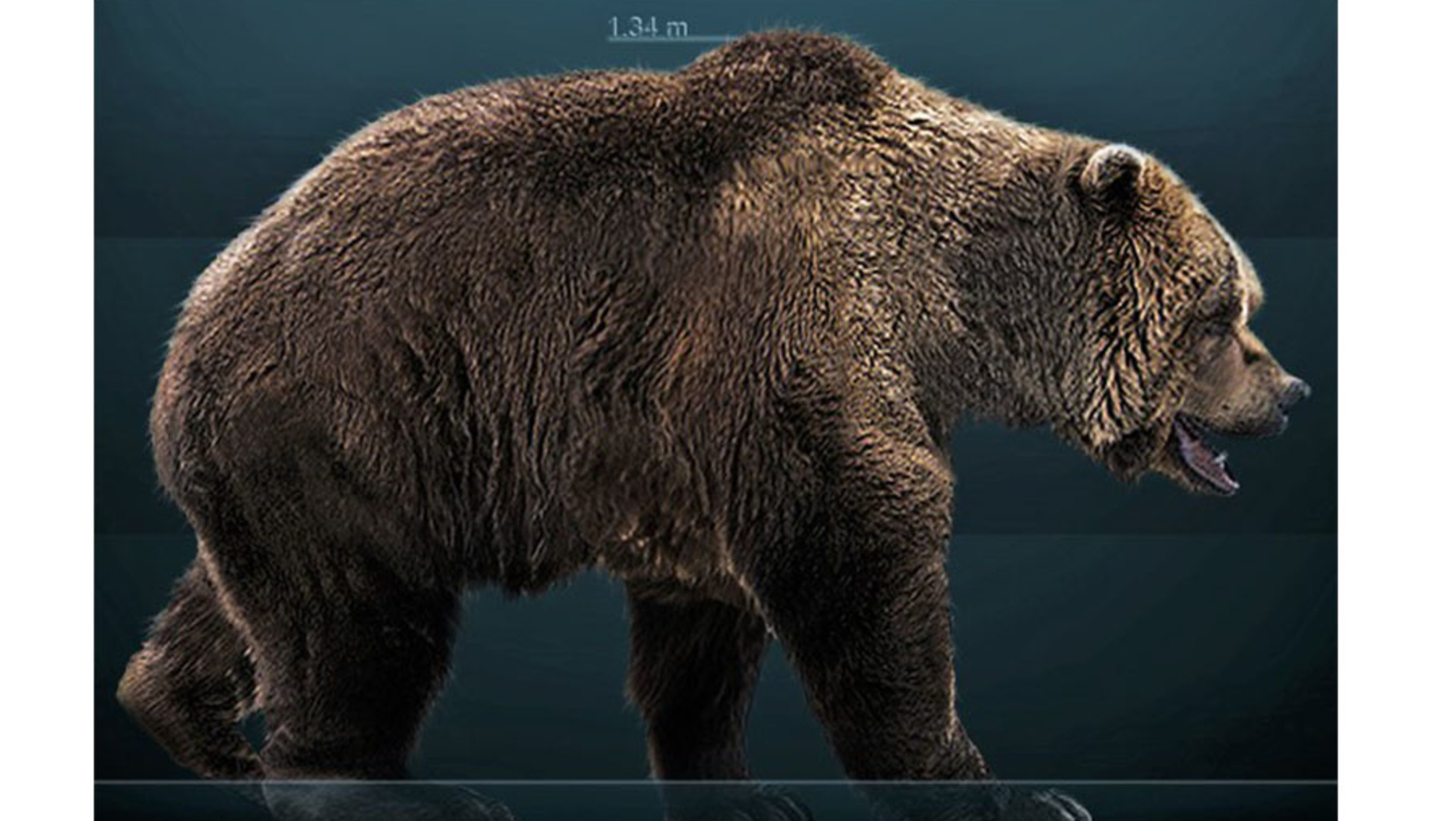
cave bear vs polar bear The World of Animals
Females often weigh between 400 and 700 pounds and are 6 to 8 feet tall and as we have previously seen, the ordinary cave bear is between 9 and 11 feet (2.7 to 3.5 meters) long and weighs between 770 to 1,320 pounds (350 and 600 kilograms), with some individuals reaching 2,200 lb (1,000 kilograms).
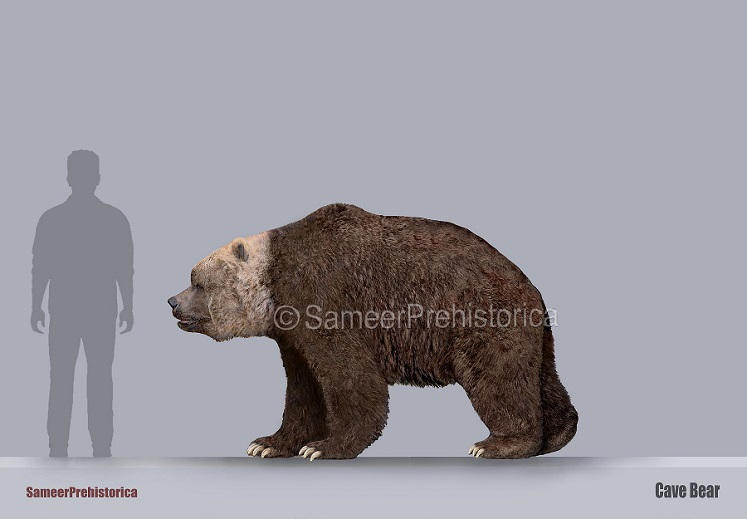
Cave Bear Size by SameerPrehistorica on DeviantArt
Here, we look at size and shape changes within the cave bear (U. spelaeus) dentition of the Scladina Cave. Basicranial ontogeny comparison in Pan troglodytes and Homo sapiens and its use for developmental stage definition of KNM-ER 42700. Am. J. Phys. Anthropol., 170 (2019), pp. 579-594.
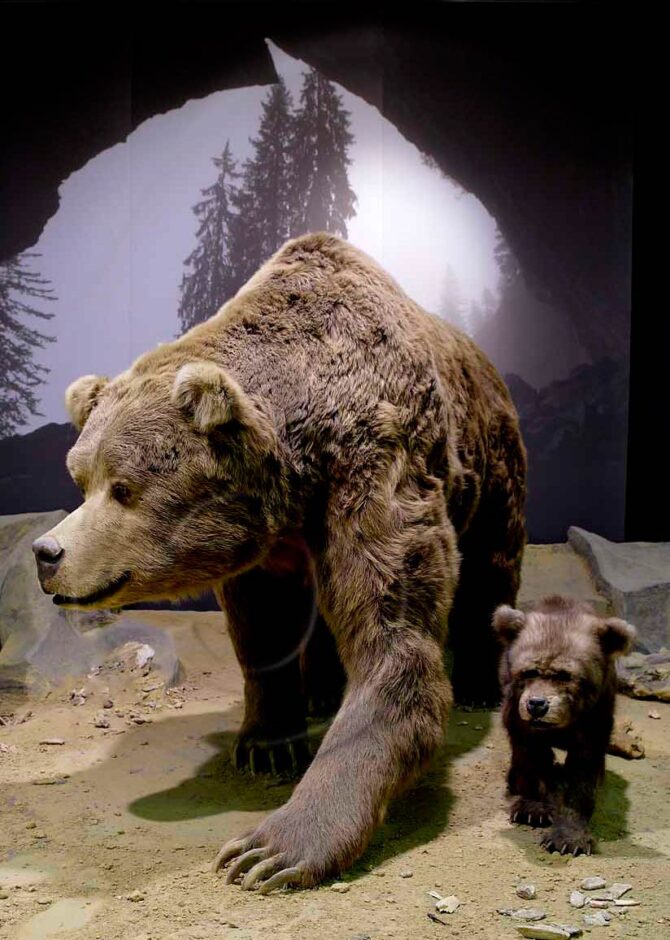
Cave bear (Ursus spelaeus)
The cave bear ( Ursus spelaeus) is a prehistoric species of bear that lived in Europe and Asia during the Pleistocene and became extinct about 24,000 years ago during the Last Glacial Maximum . Both the word cave and the scientific name spelaeus are used because fossils of this species were mostly found in caves.

Ursus Major Cave bear, Wild creatures, Prehistoric animals
In comparison, the U. s.. This is also congruent with our estimations of the cave bear population size development through the last 150 to 25 ka, exhibiting a relatively stable population size.

Biggest of the Biggest Bears Domain Of The Bears
1. History's largest bear ( Arctotherium angustidens) A recreation of the ancient Arctotherium. This is quite simply, the largest bear ever discovered and by default, a contender for the.

Bears of the Pleistocene
Cave bears grew to be between 880 and 2,200 pounds. This is roughly the size of today's Kodiak or Polar bears, two of the largest species of modern bears. They looked similar to modern bears and are part of the same genus. The two main species of cave bears are Ursus spelaeus and Ursus deningeri.

arctotherium angustidens Google Search Prehistoric animals, Giant animals, Extinct animals
Using state-of-the-art intra-tooth laser ablation strontium isotope analysis (Le Corre et al. 2023), and targeting the preserved remains of cave bears (and brown bears) from selected Late Pleistocene European sites, this project will undertake the first targeted investigation of cave bear spatial ecology.
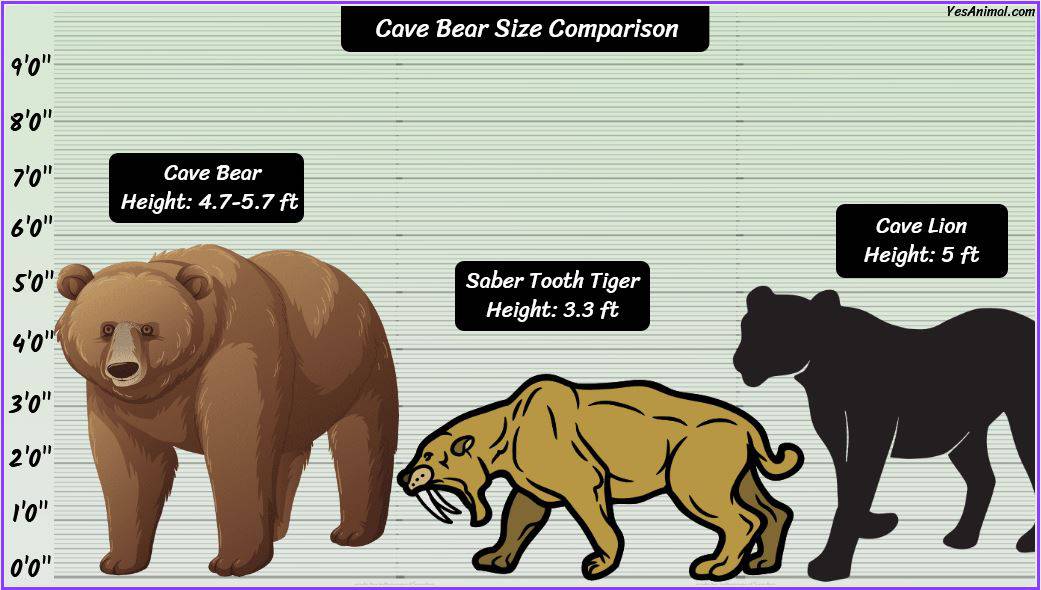
Cave Bear Size How Big Were They? Compared With Others
9 mins to read Contents Are you fascinated by the Ice Age? Then get ready to know about a special kind of bear which existed tens of thousands of years ago and has since gone extinct. We present to you the cave bear. These gigantic bears lived during the Ice Age in caves.

The extinct cave bear (Ursus spelaeus) had a wider heads than today’s bears and powerful
spelaeus were found only between Hyaenidae and adult and sub-adult cave bear groups of individuals (ANOVA and Tukey's pairwise comparison: Q = 4.188 and p = 0.0357 for δ 13 C values; Q = 7.238.
:max_bytes(150000):strip_icc()/cavebearvscavelion-58b9aefd5f9b58af5c966a94.jpg)
Interesting Facts About the Cave Bear
01 of 10 The Cave Bear Was (Mostly) a Vegetarian Nastasic / Getty Images As fearsome-looking as it was (up to 10 feet long and 1,000 pounds), the Cave Bear subsisted mostly on plants, seeds, and tubers, as paleontologists can infer from the wear patterns on its fossilized teeth.

How big was the Giant Shortfaced Bear? Boneblogger Science and the outdoors
Rosenmüller, 1794. Cave bear is the common name for a large bear, Ursus spelaeus, that lived in Europe during the Pleistocene about 250,000 years ago and became extinct at the end of the last ice age about 12,000 years ago. Both the common name, cave bear, and the scientific name, spelaeus, derive from the fact that fossils of this species.
Size comparison between the cave bear (ursus spelaeus) and the brown bear (ursus arctos) r
Fun Fact Cave bears may have been worshiped by primitive humans. Estimated Population Size Extinct Diet Omnivore Favorite Food Primarily vegetation augmented with the occasional small animal or fish. Perhaps cannibalized cave bears that died during hibernation. Cave Bear Physical Characteristics
Biggest of the Biggest Bears Domain Of The Bears
Introduction During the Pleistocene, Eurasia was home to many large sized mammals, commonly referred to as megafauna [ 1, 2 ]. Among them are cave bears, Ursus spelaeus, one of the most commonly found species, recovered in numerous Eurasian localities ranging from Spain to Russia [ 3, 4 ].

Cave bear and Kodiak bear (size comparison) Extinct animals, Prehistoric animals, Prehistoric
Despite their smaller size, 1 Mb non-overlapping bins are adequate for testing cave bear introgression into brown bears because they are substantially longer than the longest estimated length of.
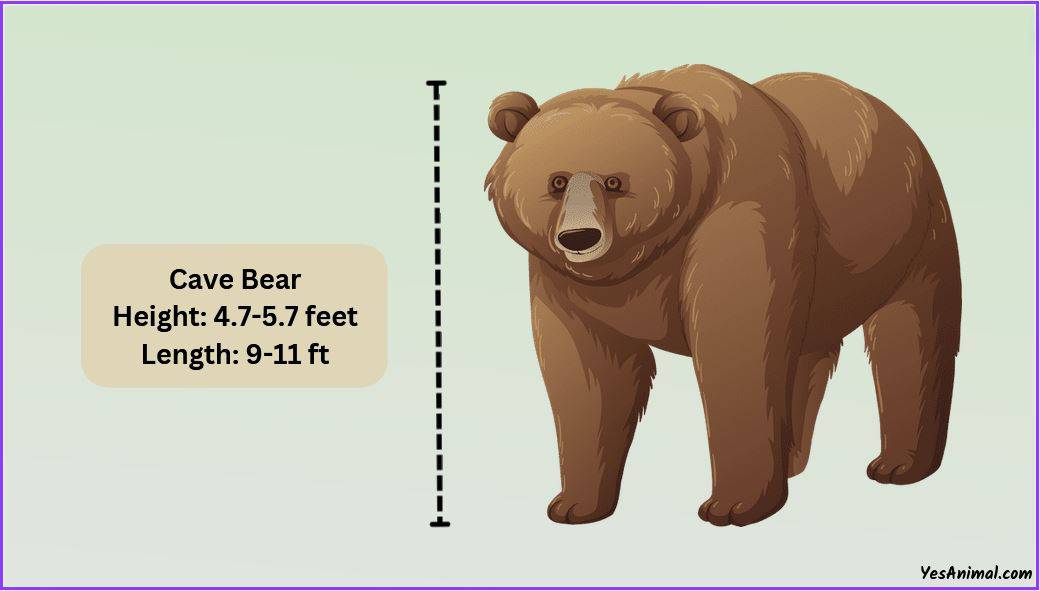
Cave Bear Size How Big Were They? Compared With Others
The cave bear's weight ranged from 400 to 1,000 kg (about 880 to 2,200 pounds), the largest cave bears being comparable in size to the Kodiak bears ( U. arctos middendorffi) of Alaska and the polar bears ( U. maritimus) of the Arctic. The head was very large and the jaws bore distinctive teeth, which suggests that the animal was largely vegetarian.

Ursus spelaeus was similar in size and structure to the largest of modern day bears. Cave bear
The average cave bear could weigh between 770 and 1,320 pounds, but larger specimens grew up to 2,200 pounds! They could stand between 4 and 5 feet at the shoulder when walking on all fours, and they could grow from 6.6 feet long to much longer.